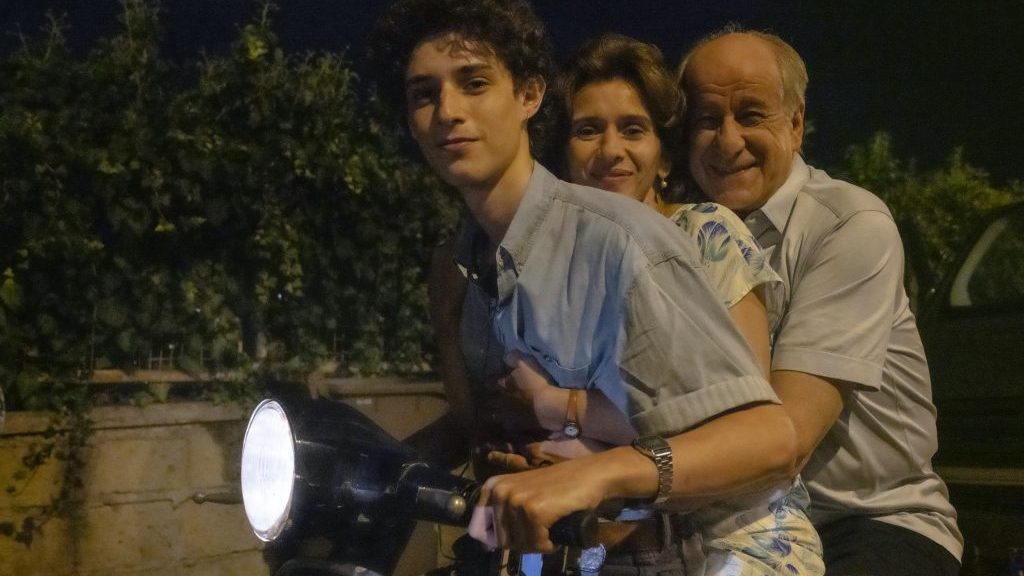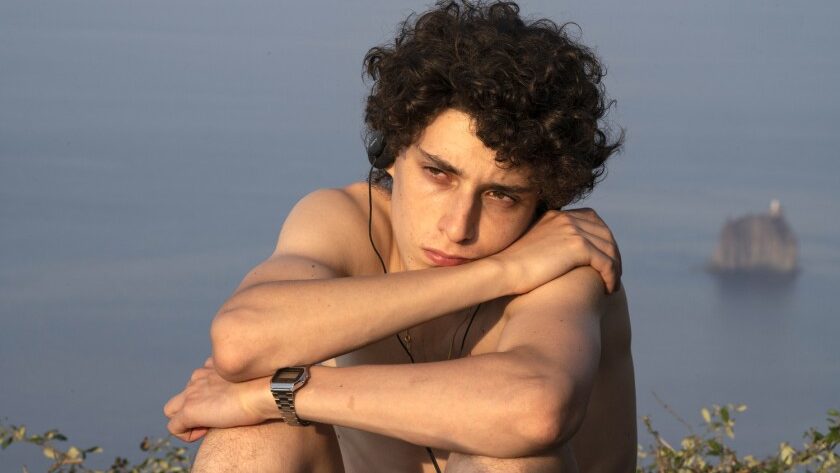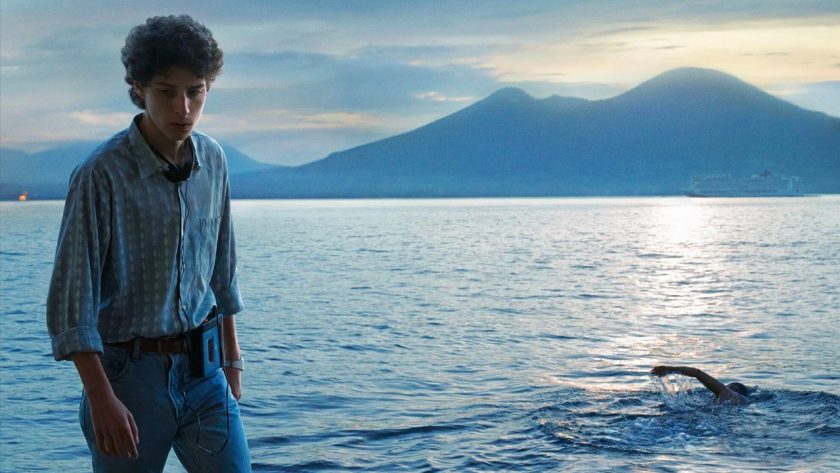Siena Muller reviews an 80s Italian film about a teen struggling to find his place after he’s saved from an accident by football legend Diego Maradona.
In his latest film, È stata la mano di Dio, Paolo Sorrentino takes us back to his hometown of Naples; in the 80s, a city eagerly awaiting the arrival of one of the greatest sportsmen of all time, Diego Armando Maradona. The legend of the footballer, from which the film derives its title, serves as both contextual background and determinant in a film that is Sorrentino’s most sincere one yet.
Having previously seen the director’s more sensual and surreal La grande bellezza (2013), and his recent outlandish production The New Pope (2020), this film was striking for its touching, refreshing honesty. The protagonist — a stand-in for Sorrentino’s young self — Fabio Schisa (Filippo Scotti), is a quiet teenager, infatuated by the women he encounters, and deeply caring for his family. One of the opening scenes shows him driving a Vespa with both his parents (charismatically played by Toni Servillo and Teresa Saponangelo) behind him wearing no helmets; we are immediately presented with a stereotypical image of the Neapolitan (and, by extension, the Italian) enjoyment of reckless driving, but also one that encapsulates the type of fun shared with loved ones on a warm summer night in the Mediterranean. Fabio is also a loyal fan of Maradona, and never leaves the house without his Walkman. Like many other Liceo Classico students, he wants to study philosophy without quite knowing what it entails; he quotes Dante by heart, impressing and confusing his relatives.

Having grown up in Italy myself, there were many instances of familiarity, evocative of my own memories. In fact, beyond the charming landscapes and the strong Neapolitan accent, the family scenes were particularly moving. If there is one thing that distinguishes Italians, it’s their passionate, effusive love for family and home, and Sorrentino rendered this beautifully across the entirety of his film. Parents who look like young lovers, brothers who embrace and kiss, big family gatherings in picturesque villa gardens and old-fashioned homes with the occasional bickering and gossip between the members on the topic of someone’s new boyfriend; these all seem to me like vignettes inspired by everyday life in Italy. The scene concerning an overcrowded boat could have been taken from the memory of any witness on any boat trip involving Italians, and the enthusiasm of a neighbourhood jumping on their terraces when a goal is scored could have been filmed during this year’s Euros. The human intimacy and comedy that permeates the first half of È stata la mano di Dio conveys a nostalgia reminiscent of Fellini’s heartwarming Amarcord, with its recollective nature and caricatures of real life characters who are, ultimately, humanised.
The film’s emotional potential can be sensed in Sorrentino’s ability to seamlessly take us from the extremes of sadness and heartbreak to sheer joy. A scene where the mother’s wailing over her husband’s unfaithfulness is unexpectedly interrupted by the incredible news of Maradona finally coming to play for Naples demonstrates this perfectly. Following this, the second half of the film takes a different turn (this is also where the ‘hand of god’ comes into play), yet it manages to preserve something of the humour and lightheartedness of the beginning. This half seems overall more introspective, Fabio coming to terms with his pain and loneliness, accepting that “la realtà è scadente” (reality is mediocre), yet it is also hopeful. From this realisation, in fact, comes Fabio’s decision to become a director; a method of escaping reality, no longer the contemplator of a life he doesn’t like, but the craftsman of an imaginary one.

An excessively autobiographical observation of the film might undermine the universal familiarity it undoubtedly bears even for a non-Italian audience. However, it is particularly useful when explaining the scene of Fabio’s arguably climactic conversation with director and future mentor Capuano, the first significant encounter he has outside of his family nucleus. I found this scene not sufficiently in tune with the rest of the film; it felt performative and self-referential, ironic considering that Capuano had just earlier criticised an actress’ performance by disrupting her play over the same cause. It felt detached from the genuine feel of the rest of the film, and its intensity was not quite justified. Fabio’s determination to become a filmmaker to evade reality seemed slightly cliched and romanticised, but it can be understood as the condensation of Sorrentino’s own experience of pursuing his dream as a director, and the influence Capuano had on him.
The film blends personal experience with folkloristic elements of Naples’ Monaciello (opening and closing the film) and the myth of Maradona. And even though the narrative is clearly personal, Sorrentino doesn’t exclude his signature eccentricities, often embodied in the figure of beautiful women appearing sporadically, reminding us of the artifice and decadence of La grande bellezza. The inner idiosyncrasies of Naples as a city, mostly shot from the distance with panoramic pans, perhaps could have also been better represented.
‘A’ tien ‘na cosa ‘a raccuntà?’ (‘Do you have anything to tell?’) asks Capuano to Fabio and, when attempting to dissuade him from going to Rome, the director tells him: ‘In the end, you always come back to yourself, Schisa, you come back here, back to failure.’ È stata la mano di Dio seems to do precisely that, proving the power of memory and family anecdotes to translate into motion, melancholy, and surprise, making us simultaneously laugh and cry. As Capuano tells Fabio, a film’s success lies in its ability to tell a story. It is Sorrentino’s story that imparts to this film a sense of realism and solace as a celebration of human experience through company, loss and renewal.
È stata la mano di Dio will be released on Netflix on December 15th:





Very nice review!